How to Stay Safe From Wildfire Smoke
Breathe more easily with these tips on choosing the right protective mask, maintaining your indoor air quality, recognizing when to avoid the outdoors, and knowing who is most at risk.
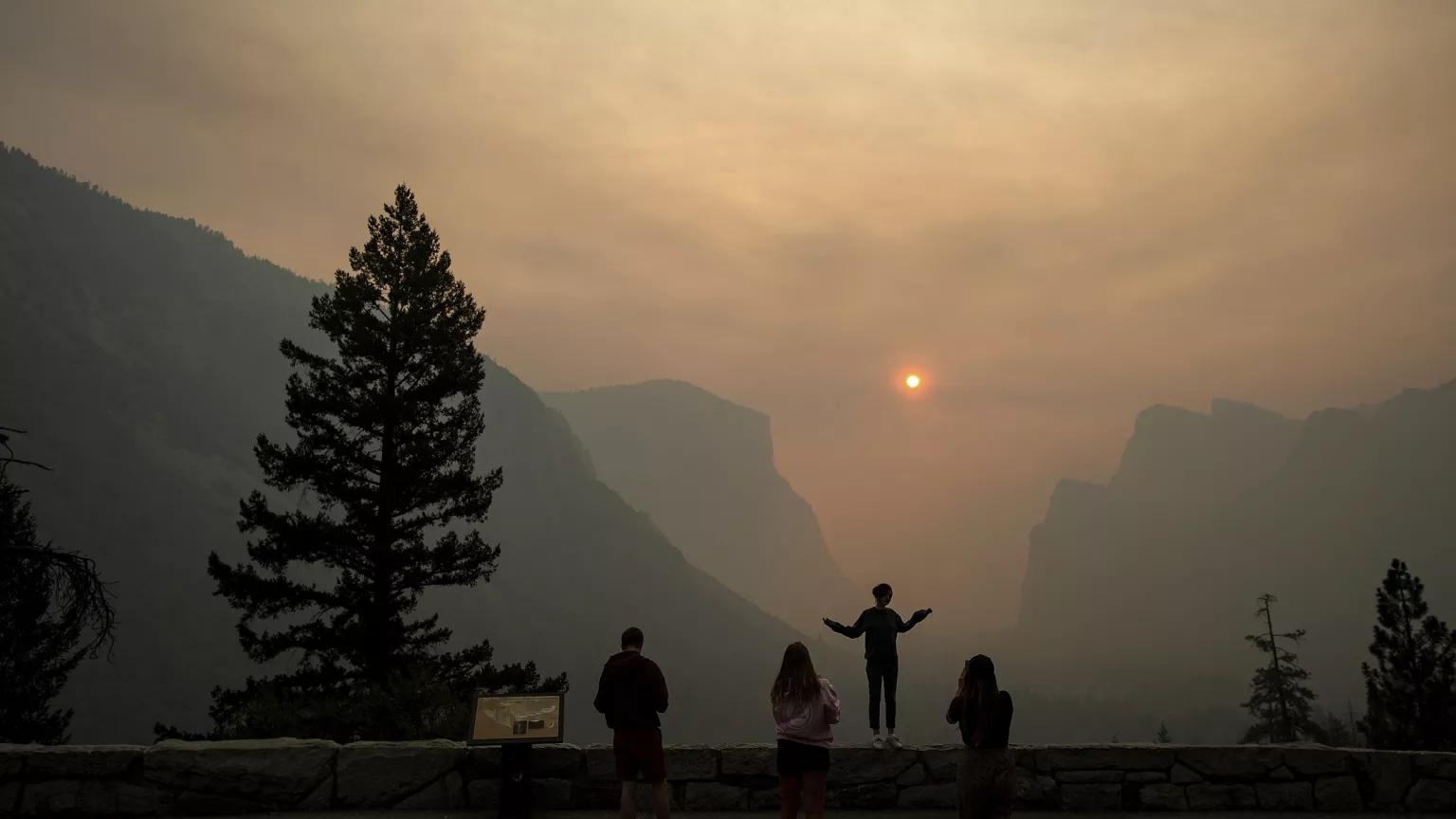
Smoke from the Ferguson Fire filled Yosemite National Park during the height of tourist season in the summer of 2018.
Noah Berger/Associated Press
Across the country, wildfires torched some 7.5 million acres of land in 2022, and their impacts were not limited to communities directly in their paths. The harmful smoke produced when trees and other organic materials burn can travel hundreds to thousands of miles from the actual flames—and have consequences for air quality along the way.
“The regions that produce the most smoke are the Southwest and the northwestern Rocky Mountains,” says Emily Fischer, an atmospheric scientist at Colorado State University in Fort Collins who has conducted research on the composition of wildfire smoke. “But the Northeast, mid-Atlantic seaboard, and Southeast are routinely impacted by smoke from western regions.”
Fire activity, particularly in the Southwest and Pacific Northwest, has increased in recent decades. That is due in part to longer and hotter dry spells afflicting western forests, causing them to be more susceptible to wildfires. One study found that since 2000, there are an average of nine more days each year of high fire potential across western U.S. forests.
“The effects of climate change are going to continue,” says NRDC senior scientist Kim Knowlton, with the severity and frequency of wildfires (among other extreme weather events) likely to increase in the future. More fires mean more smoke—and increased respiratory health hazards—making it essential for all of us to understand the risks and reduce our smoke exposure.
Recognize who is most vulnerable.
Short-term exposure to wildfire smoke doesn’t usually pose a serious risk to healthy adults. They might experience burning eyes, a runny nose, coughing, wheezing, or difficulty breathing. But the young and old can face more serious consequences from the fine particulate matter contained within the complex mixture of gases that make up wildfire smoke. This mix can also have potentially negative effects on a developing fetus, so pregnant people are also at heightened risk.
Children are especially susceptible because their respiratory systems are still developing, says Naveena Bobba, deputy director of health at the San Francisco Department of Public Health. Particulate matter less than 2.5 micrometers in diameter, commonly called PM2.5, can penetrate deep into the lungs, she says, damaging or destroying delicate tissue.
Anyone with heart or lung disease—such as angina, ischemic heart disease, or asthma—should also take extra care when facing wildfire smoke pollution, as exposure can trigger palpitations, shortness of breath, and other symptoms. These conditions are particularly prevalent among the elderly and among people with diabetes, who have a higher probability of underlying cardiovascular disease than non-diabetics. “During wildfire season, make sure you have medications in hand,” Bobba says.
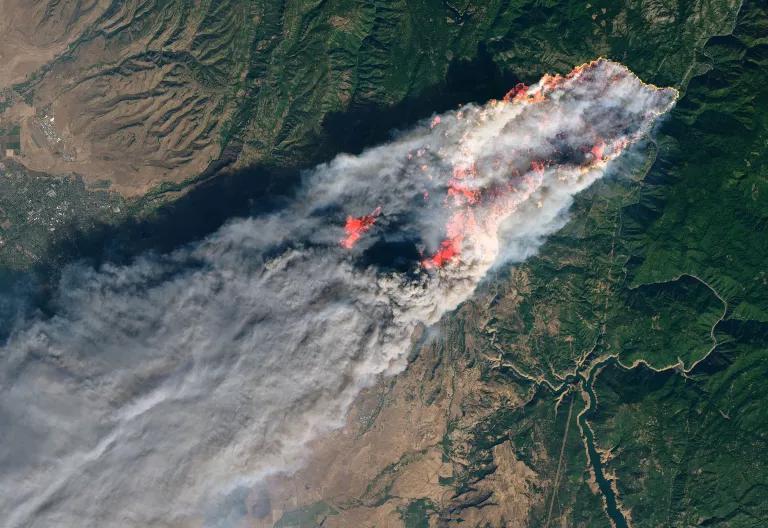
A view of the 2018 Camp Fire in California, seen from space
NASA
Keep tabs on local air quality.
Wildfire smoke can travel far downwind and persist for days, and just because the air looks clear doesn’t mean it is. To keep track of air quality in your area, visit the AirNow fire and smoke map maintained by the U.S. Environmental Protection Agency (EPA). The map shows fire locations and smoke plumes, and conveys levels of PM2.5 in the air using a six-tiered, color-coded system. Areas facing no risk appear in green and those at the hazardous end of the spectrum are marked in maroon. The EPA states which people are at risk at each air quality level, so it’s easy to tell when you should take precautions, and when you’re good to go.
Protect indoor air.
When smoke drives down outdoor air quality, staying inside—and protecting the air in your home—is even more important than usual.
Bobba recommends keeping windows and vents closed and replacing the filters on air conditioners and air filtration systems routinely. The U.S. Department of Energy recommends swapping in a new filter every month or two when the air conditioner is in constant use; if someone in your house has asthma, a general rule of thumb is to change your filter every six weeks. (Bonus: Removing an old, clogged filter doesn’t just improve air quality; it can also lower an AC system’s energy consumption by up to 15 percent, decreasing energy bills.) “If you do turn on an AC window unit, make sure it’s on the recirculate setting [“cool,” as opposed to “fan”], so you’re not bringing in air from the outdoors,” Bobba says. There’s evidence that putting a portable air cleaner or high-efficiency HVAC system filter in each room improves indoor air quality, but they’re expensive, so they may not be an option for everyone.
If you have children, change your clothes and theirs as soon as you come indoors on days with especially poor air quality, and remove shoes at the doorway.
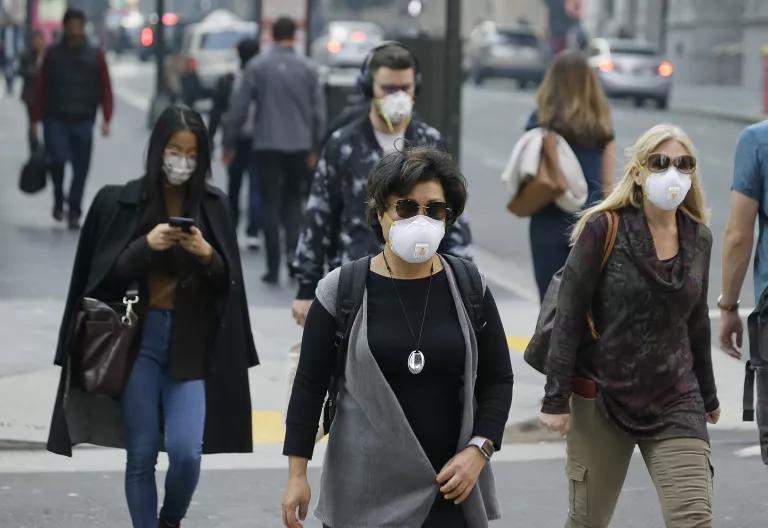
People in masks while walking in San Francisco’s Financial District in November 2019
Eric Risberg/Associated Press
Get a mask.
On days when wildfire smoke levels are high, it’s best to limit time outdoors. If you go outside on a day when air quality moves into the unhealthy zone, wear a particulate respirator mask. If you’re shopping for one, be sure it has “NIOSH,” (which stands for National Institute for Occupational Safety and Health) as well as either “N95” or “P100” printed on it, has two straps, and fits over your nose and under your chin, sealing tightly to your face. The EPA offers more information on choosing and using a mask and the CDC has tips for places that may offer free N95 respirators, including some pharmacies, local health clinics, and community support agencies.
It’s best to stay prepared—“and places do run out,” adds Knowlton. “So if you live in a smoke-prone area, lay in a supply of a few masks.”
Bobba notes that masks don’t work for everyone. A person with a beard, for example, might not be able to get a tight seal. What’s more, she says, “there are no children’s masks; N95 masks were made for adults.” The smallest size for adults might fit some children, but because they weren’t designed for youngsters, she doesn’t recommend relying on them. Instead, parents and caregivers can take advantage of public places with good ventilation systems when they need to get out of the house. Just as you might do on a hot day, visit the library, bring your kids to run around the mall, or head to the movies or any other place that has an AC system.
Protect yourself during fire cleanup.
If your community is evacuated, health risks can continue after the fires are gone, and you return. Cleanup work can also expose you to ash and other toxic fire remnants that may irritate your eyes, nose, lungs, or skin. The EPA emphasizes that children should not be doing any cleanup work and ash and debris should be removed before bringing kids back home.
This story was originally published on February 5, 2019, and has been updated with new information and links.
This NRDC.org story is available for online republication by news media outlets or nonprofits under these conditions: The writer(s) must be credited with a byline; you must note prominently that the story was originally published by NRDC.org and link to the original; the story cannot be edited (beyond simple things such as grammar); you can’t resell the story in any form or grant republishing rights to other outlets; you can’t republish our material wholesale or automatically—you need to select stories individually; you can’t republish the photos or graphics on our site without specific permission; you should drop us a note to let us know when you’ve used one of our stories.

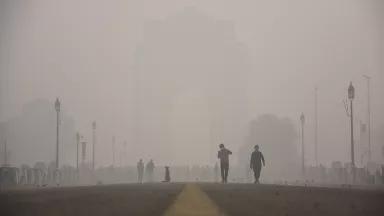
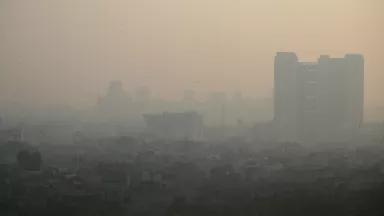
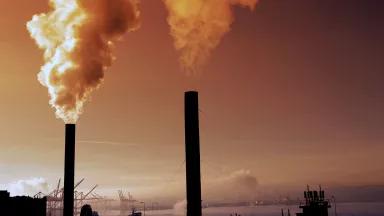
Public Health Scientist and Advocate
Climate Change Is Making Us Sick
The Particulars of PM 2.5